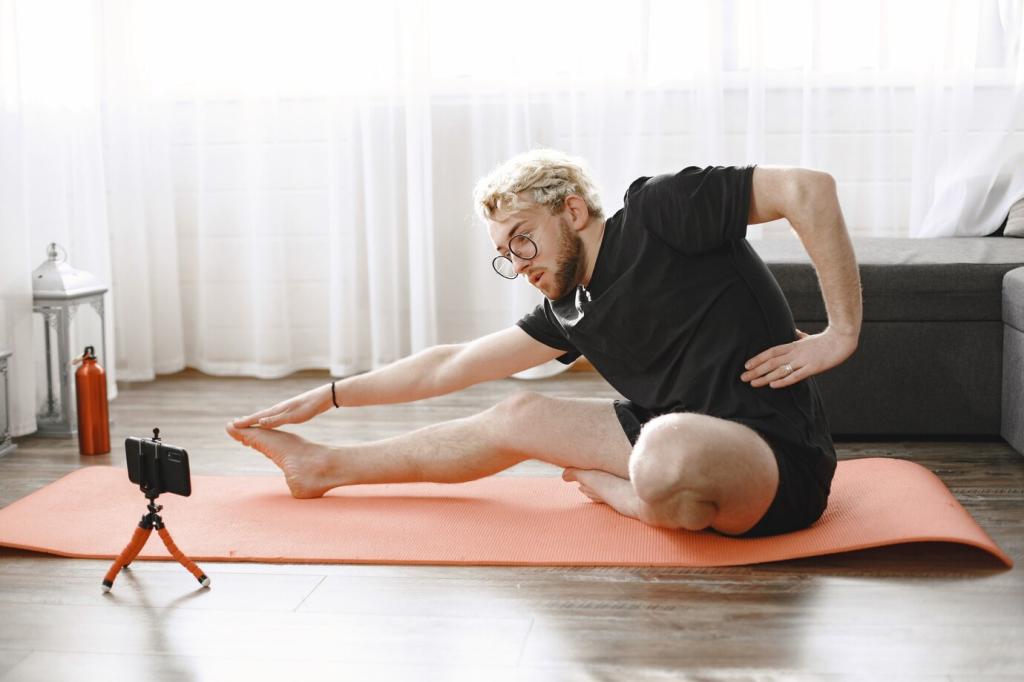Designing Your First Personalized Routine
Choose exercises you’ll actually do: bodyweight squats to a chair, wall or incline push-ups, supported rows, and gentle hip mobility. If knees grumble, try step-ups or glute bridges instead. Work with what you have—bands, stairs, or a sturdy backpack—for a plan that fits real life.
Designing Your First Personalized Routine
Begin with two to three total-body sessions per week, leaving forty-eight hours between strength days. Keep sets modest, rest generously, and add volume gradually. Think steady nudges, not heroic leaps. A short walk or mobility snack on off-days keeps blood flowing and soreness manageable.




